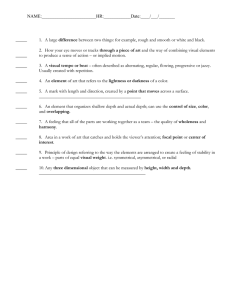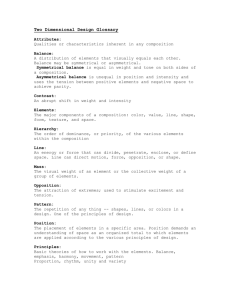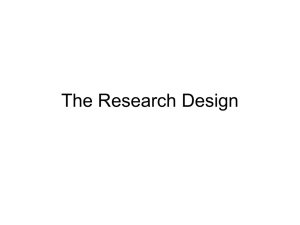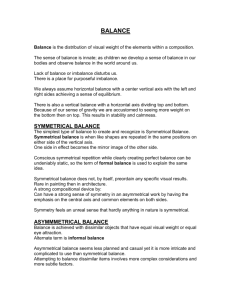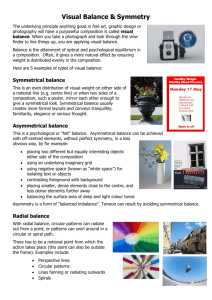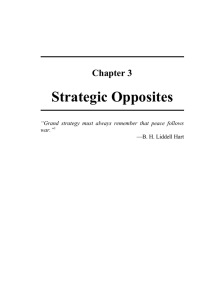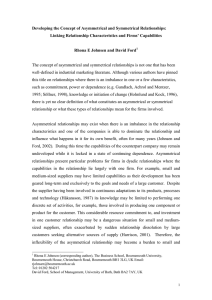Asymmetrical Relationships - the political economy of war
advertisement
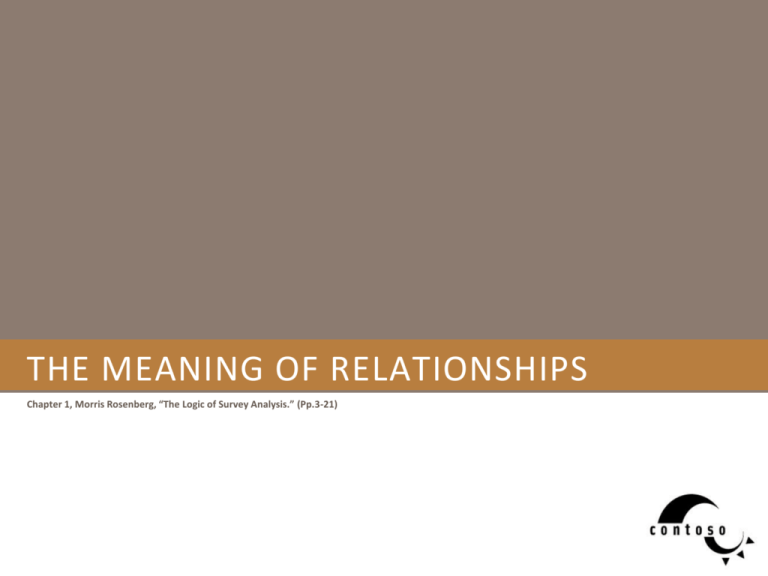
THE MEANING OF RELATIONSHIPS Chapter 1, Morris Rosenberg, “The Logic of Survey Analysis.” (Pp.3-21) THREE possible forms a relationship can take 1. None of the variables influences the other (Symmetrical Relationship) SLIDES 2. SAMPLE Both variables influence each other (Reciprocal Relationship) 3. Only one of the variables influences the other (Asymmetrical Relationship) I. Symmetrical Relationships - This means that neither variable “causes” the other, neither variable can be considered “prior” in time to the other. Five types of symmetrical relationships 1. 2. SAMPLE SLIDES Alternative indicators of the same concept (e.g. signs of anxiety, palmer perspiration and heart pounding).- Factor analysis. Effects of a common cause (e.g. Storks and babies, or restitutive punishment and individualism)- often referred to as ‘spurious’ relationships. 3. Functional interdependence as elements of a unit (e.g. the presence of lungs correlates with the presence of the heart, it is not that one “causes” the other but both are indispensible in the functioning of the unit, the organism)- structural analysis 4. SAMPLE Parts of aSLIDES “complex” (e.g. rich people are often members of country clubs, drive particular brands of cars, stay at particular types of hotels when on trips, attend the opera etc- there is no functional interdependence between these different parts but the lifestyle “complex” ensures that these are often found together).descriptive analysis 5. Accidental or Fortuitous: (e.g. the association between the emergence of the space age and rock and roll music). **Elaboration is generally not a useful second step after the discovery of the symmetrical nature of relationships. II. Reciprocal Relationships (both influence each other) Main Problem: Which variable is the cause and which is the effect. Alternating Asymmetry: one acts on the other, the other acts on the SAMPLE SLIDES first- mutually reinforcing the relationship, servo-mechanism, feedback , e.g. thermostat and temperature; Republican message and Republican convictions. - The ‘chicken and egg’ are both responsible for each other, which came first, the “primal cause” is not commented upon in reciprocal relationships. - Causation analysis, elaboration of relationships relates to Asymmetrical Relationships III. Asymmetrical Relationships -age and movies: inverse relationship - an external influence produces a change in something SAMPLE SLIDE are interested in i) causation ii) understanding iii) -Scientists prediction, iv) control - The variable that is not subject to change has causal priorityit comes before the other variable in the relationship. -Fixed variables, also known as “status variables”: sex, race, birth order, national origin. - Relatively but not absolutely fixed variables, social class, religion, rural/urban residence SCIENCE IMPLIES EXPLANATION THROUGH ‘INVARIABLE LAWS’ -Dominant direction of influence of variables, e.g. mental health and religion. TYPES OF ASYMMETRICAL RELATIONSHIPS 1. Stimulus-Response: e.g. war and civilian morale, those exposed to the stimulus and those not exposed must be similar on all other factors. This makes the ‘selection’ of the sample of SAMPLE SLIDES in inferring stimulus-response relationship. great importance 2. Disposition-Response: liberal- liberal action, the tendency, given circumstances, to respond in specific ways (e.g. attitudinal research, attitude is taken as independent variable and action as dependent variable, e.g. prejudice and discrimination). Beware of redundancy, where a larger concept embraces a smaller one TYPES OF ASYMMETRICAL RELATIONSHIPS 3. Property-Disposition: e.g. sugar’s properties, shape, size, weight etc and solubility. Central type of relationship in social research, the property of an individual and a disposition to act: SAMPLE race andSLIDES alienation, region of country and voting, class and voting etc. Since properties are resistant to change they are often taken as independent variables. 4. Necessary precondition for a given effect: technological advancement and nuclear weaponry, technological advancement does not cause nuclear weapons but “makes it possible.” Free labor necessary precondition for development for capitalism. TYPES OF ASYMMETRICAL RELATIONSHIPS 5. Immanent relationship: property inherent in nature of setup to produce a relationship between two variables, e.g. Bureaucracy and red tape, the dependent variable arises out of the independent variable, SAMPLE SLIDES bureaucracy leads to adherence to rules, which leads to red tape. 6. Means-ends (purposive relationships), e.g. standardization of procedure and lower costs, nest building and survival of the young. Do the ends determine the means or do the means determine the ends, in whose mind does the purpose reside, if it resides in the mind of the actor then the end determined the means, if the end resides in the mind of the investigator then the means (cause) determines the end (effect) TASKS AT HAND 1. Assign meaning to the relationship, what kind is it? Asymmetrical, reciprocal or symmetrical 2. If asymmetrical, which is the independent and which is the SAMPLE SLIDES dependent variable. 3. If symmetrical, what type is it, indicators of common concept, common cause (spurious), functional relationship and elements in a social complex 4. If reciprocal, it tells us about the “dynamic nature” of social relationships, e.g. the cycle of poverty. 5. If asymmetrical, we need to determine, whether it is stimulusresponse; disposition-behavior; property-disposition (or behavior); necessary precondition- consequence, variables immanent in structures and means-ends analysis. Exam question Which is the most common type of sociological analysis of asymmetrical relationships? SAMPLE SLIDES -means-ends -property-disposition -disposition-behavior -structure-variables -necessary precondition -stimulus-response Answer Which is the most common type of sociological analysis of asymmetrical relationships? SAMPLE SLIDES -means-ends -property-disposition -disposition-behavior -structure-variables -necessary precondition -stimulus-response Property as independent variable and disposition or behavior as dependent variable.
